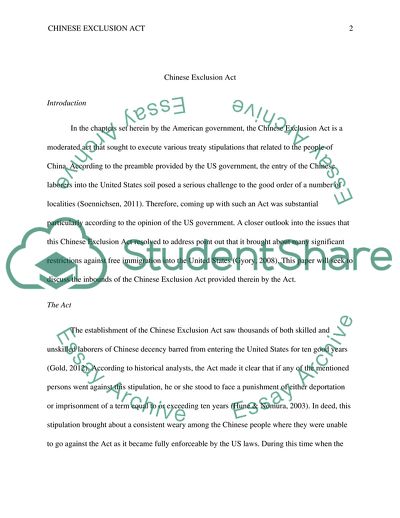Cite this document
(The Entry of the Chinese Laborers into the United States Research Paper Example | Topics and Well Written Essays - 1750 words - 1, n.d.)
The Entry of the Chinese Laborers into the United States Research Paper Example | Topics and Well Written Essays - 1750 words - 1. https://studentshare.org/history/1794429-chinese-exclusion-act
The Entry of the Chinese Laborers into the United States Research Paper Example | Topics and Well Written Essays - 1750 words - 1. https://studentshare.org/history/1794429-chinese-exclusion-act
(The Entry of the Chinese Laborers into the United States Research Paper Example | Topics and Well Written Essays - 1750 Words - 1)
The Entry of the Chinese Laborers into the United States Research Paper Example | Topics and Well Written Essays - 1750 Words - 1. https://studentshare.org/history/1794429-chinese-exclusion-act.
The Entry of the Chinese Laborers into the United States Research Paper Example | Topics and Well Written Essays - 1750 Words - 1. https://studentshare.org/history/1794429-chinese-exclusion-act.
“The Entry of the Chinese Laborers into the United States Research Paper Example | Topics and Well Written Essays - 1750 Words - 1”. https://studentshare.org/history/1794429-chinese-exclusion-act.


